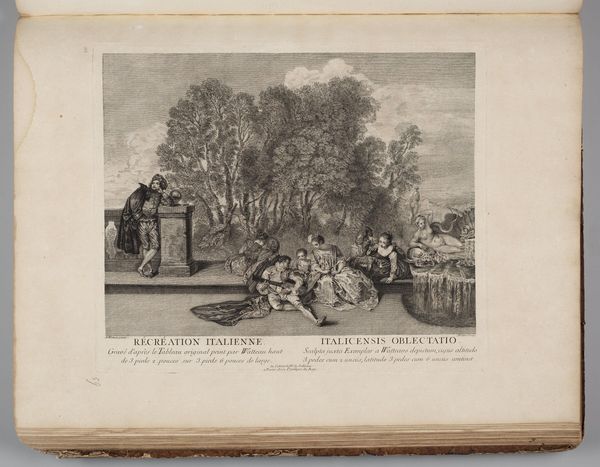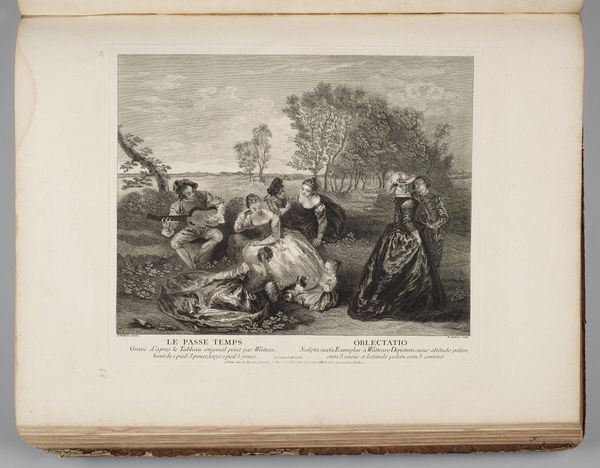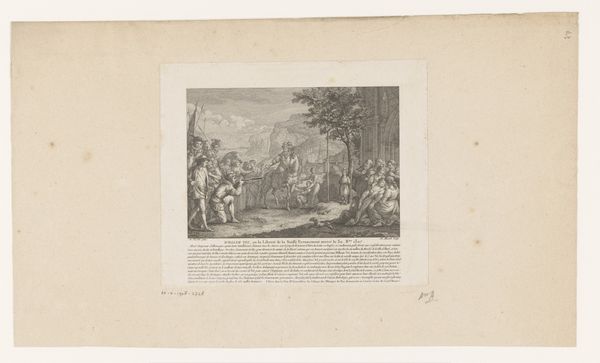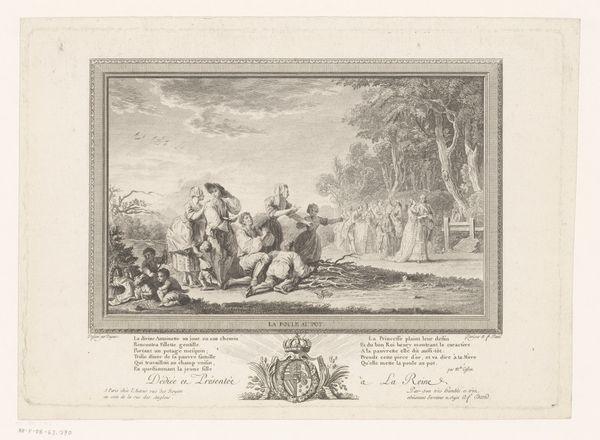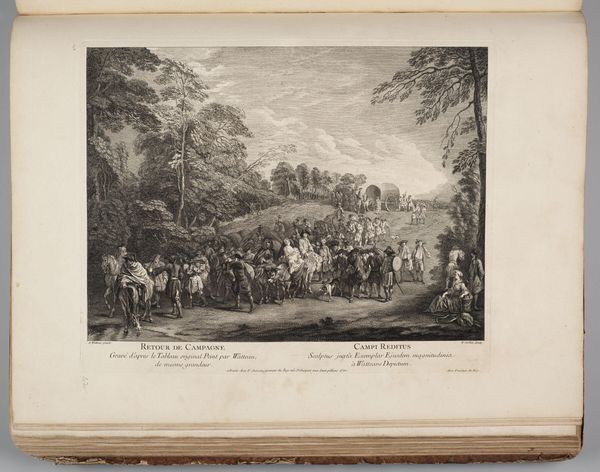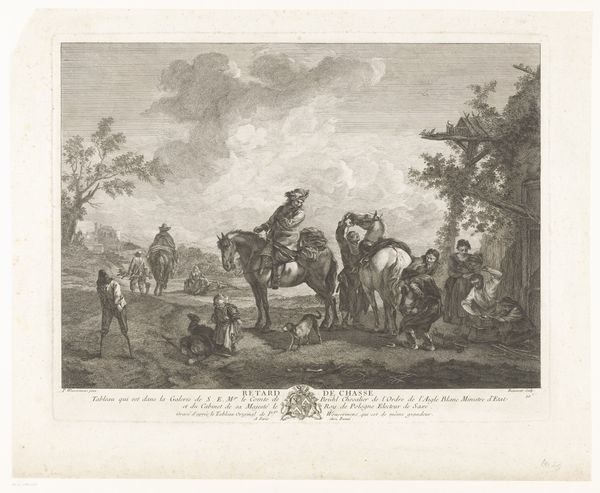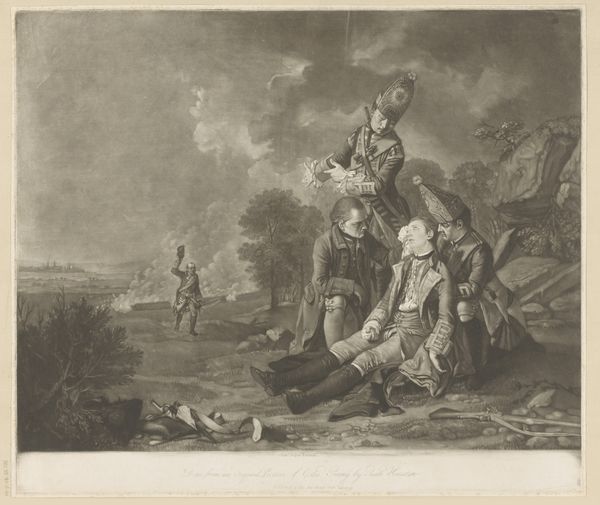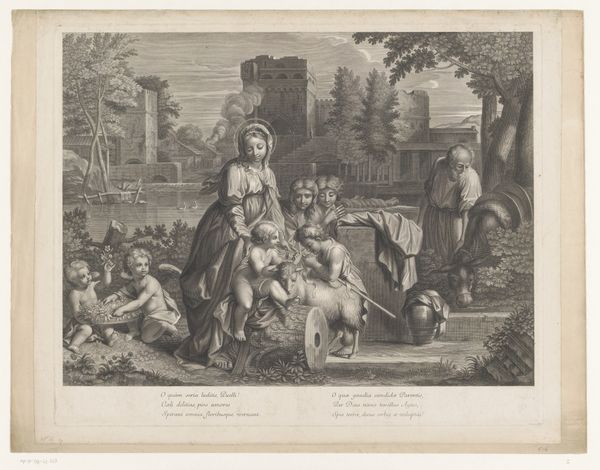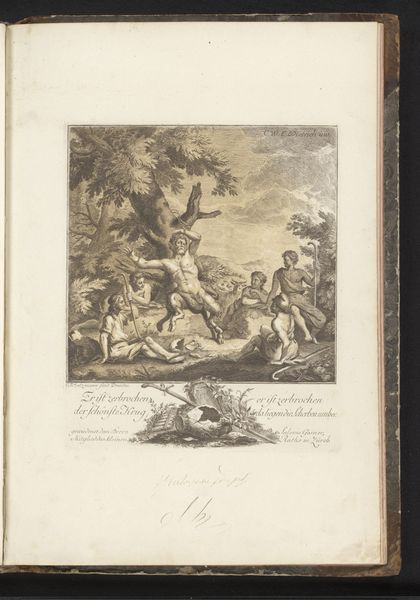
Dimensions: sheet: 47 Ã 62.5 cm (18 1/2 Ã 24 5/8 in.) plate: 37 Ã 48 cm (14 9/16 Ã 18 7/8 in.)
Copyright: CC0 1.0
Curator: Take a moment to observe "The Charms of Life" by Pierre Alexandre Aveline, now housed at the Harvard Art Museums. Editor: The image immediately strikes me as a study in contrasts. The detailed engraving captures a lively scene, yet there's an underlying tension, a quietness beneath the surface of leisure. Curator: Absolutely. Aveline, who lived from 1702 to 1760, created this work in a period defined by aristocratic patronage and the rise of Enlightenment ideals. Notice how the figures are posed within a classical architectural setting. Editor: The materials are compelling here—the printmaking itself as a means of distribution, of making art accessible. It’s a reproduction after another artist. That in itself says something about the nature of art and consumption. Curator: Precisely, and think about the implications of that. This print allowed for the dissemination of images and ideas, shaping public taste and reinforcing social hierarchies. Editor: Looking at this through the lens of materials and making, it challenges our understanding of high art versus the applied arts, the status of printmakers, and the labor behind these images. Curator: Indeed, reflecting on Aveline's work today gives us insight into how art functioned as a social and political tool. Editor: And how even the "charms of life" were crafted and consumed.
Comments
No comments
Be the first to comment and join the conversation on the ultimate creative platform.
